
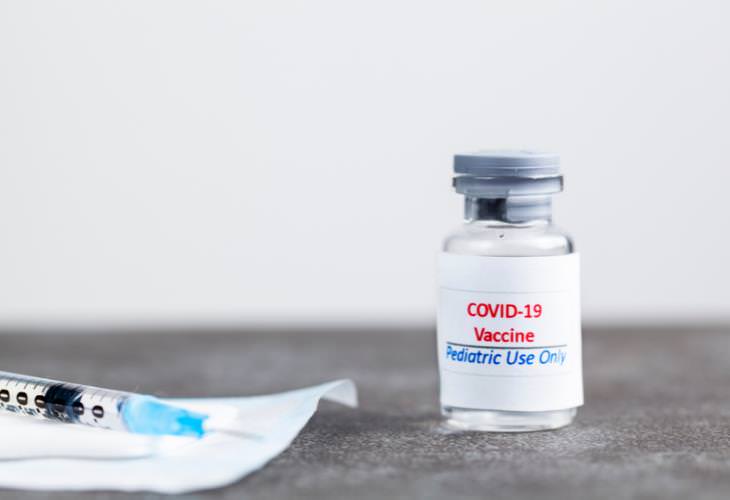
Related: Protect Your Grandchildren By Getting These 5 Vaccines
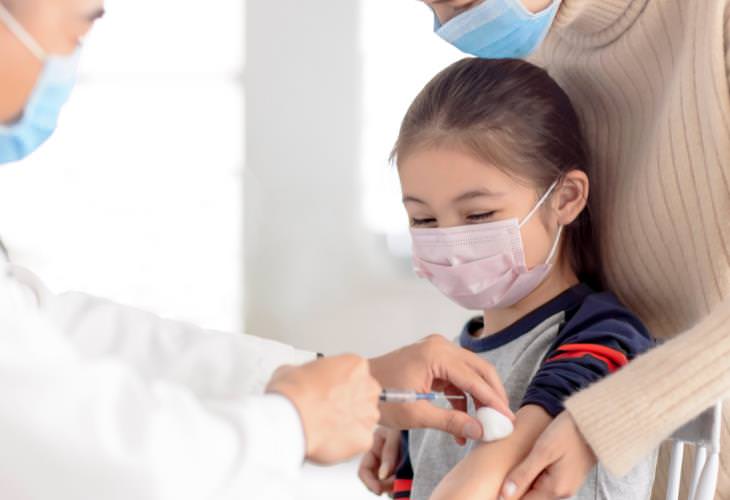
According to the FDA data, the pediatric vaccine was found to be 90.7 percent effective in preventing COVID-19 in children 5 through 11. They reviewed a vaccine study of more than 4,600 children in this age range where 3,100 participants were given the Pfizer-BioNTech COVID-19 vaccine while the others were given an inactive (placebo) shot.
None of the children in this study had been previously diagnosed with COVID-19.
Scientists also say that if a child does end up getting diagnosed with COVID-19 after vaccination, they are likely to have milder symptoms.
Children who were given the Pfizer-BioNTech COVID-19 vaccines in the study were observed for side effects for at least 2 months after the second dose. The studies reported no serious side effects. Most of the children reported similar side effects that adults have experienced with COVID-19 vaccines. The most commonly stated side effects include:
* Muscle aches
* Fever
* Fatigue
* Headache
* Chills
* Pain where the shot was given
* Joint pain
* Decreased appetite
Check your local health department website or speak to your pediatrician to find a location giving COVID-19 vaccine shots to children. Some places may be offering shots on a walk-in basis while others may require appointments. You can visit the vaccines.gov website for more details.
Related: WARNING: Covid-19 Vaccination SCAMS To Watch Out For!
Vaccines for very young children, ages 6 months to 4 years, haven’t been approved yet. But we should expect some news on this in the first half of 2022 as clinical trials are currently underway for the same.
Share this information with those who might find it beneficial...

Recovering From Covid-19? Try These 7 Easy Exercises
Exercise can help you recover from Covid-19 quicker, but being smart about it is crucial. Here are a few easy and safe exercises anyone can do at home.

COVID-19 Vaccine Update: Pfizer Vaccine Is 90% Effective
The Pfizer and BioNTech Covid-19 vaccine promises to be 90% effective, but what else is known about this vaccine and when should we expect it?
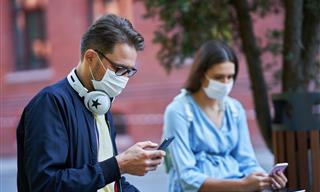
7 Subtle Signs You Might’ve Had Covid-19 Without Realizing
Covid-19 is quite elusive and hard to recognize. Here are a few subtle signs you might have already had the virus, and what to do if that's your suspicion.
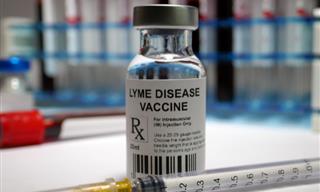
First-Ever mRNA Vaccine for Lyme Disease Shows Promise
Researchers have recently developed the first-ever vaccine for Lyme disease, and it may be able to combat other tick-borne diseases as well.

2021 Might Be an Exciting Year For All of Us!
2020 is finally over and we enter the new year with new hope. Here are some things to look forward to in 2021.

Can You Get Covid-19 and the Flu at the Same Time?
We now know it is possible to be infected with Covid-19 and the flu simultaneously. Find out about the outcomes are what protective measures can be taken.

What Do You Do When Your Partner Wants to Change You?
No matter how positive and connecting the words we say may be, the meaning of the endless arguments and mutual complaints is a lack of acceptance of the life partner as they are.

Witness the Love That Fathers Share With Their Daughters
These heartwarming paintings really illustrate the tight bond that fathers share with their daughters.

What is the Difference Between Asperger's and Autism?
In the following article, you will understand what it is, get to know the main syndromes on the broad spectrum of autism and related terms, and learn whether there is a difference between autism and Asperger's syndrome.
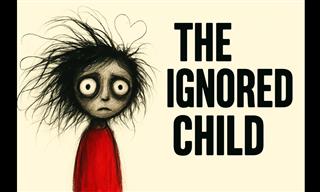 16:41
16:41
The Psychology of the Neglected Child
This video explores the hidden impact of being the ignored child—and the resilience that follows.
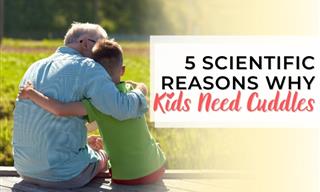
5 Scientific Reasons Why Kids Need Cuddles Every Day
Scientists found that hugging plays a vital role in a child’s brain development, offers stress relief, and may even change a baby’s genes. Read on to learn more...

15 Answers to Questions That Can Save Your Child's Life
Teaching your children the answers to these 15 questions could save their lives one day.
 11:35
11:35
Keep Kids Entertained This Summer with Cute Paper Toys
This video will show you how to make beautiful ballerina and angel figurines, 3D paper ball and much more!

The Reason Why Children Misbehave Around Mom
The kids were perfectly calm and behaved like angels - until their parents show up. Here's why kids tend to misbehave the most around mom.

Psychologist Advice: How to Get Your Child to Be Honest
In this guide, we will explain how to approach topic of honesty with your children at every age.

What to Do When Grandparents Get TOO Involved
Some grandparents don't know when to quit. Here's how it may happen and what to do about it.
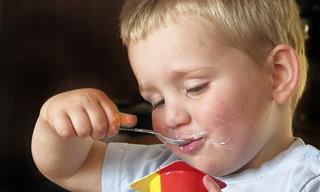
8 Foods You Shouldn't Give to Children
We’ve prepared a list of 8 such foods that you should definitely know about.

Marriage: 7 Fascinating Studies We Should All Read
7 different studies that shed some light on marriage, and perhaps offer insights and tips that will help you understand your own relationship better.

Relationship Anxiety: Understanding the Causes & Solutions
If you feel that you’re suffering from relationship anxiety, keep reading to discover the signs, causes, and how to overcome this issue.
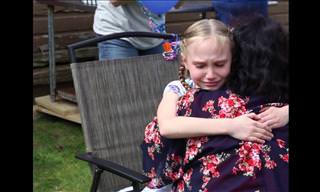 0:47
0:47
Watch as This Little Girl Finds Out She's Being Adopted
Is there something sweeter than to make the life wish of a child come true? Here is a chance to see it for yourselves.

Parents! This Is How to Make Sure Your Kids Stay Honest
Children lie sometimes, but it is important to nip this habit in the bud as it will only harm them in the future, and the following 9 tips you do just that.
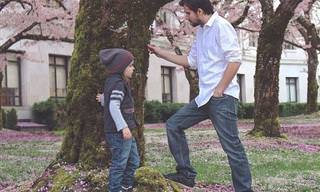
All Parents Need To Know These 13 Facts about Their Kids
Children and teenagers often behave in unexpected ways, and in order to learn how to respond and raise them correctly, we've compiled the following 13 facts!

Screens and Kids: The Risks We Don't Consider
Teenagers who report feeling addicted to their mobile phones are at a higher risk of suicidal thoughts and behaviors," says Dr. Zeeshan Khan, a psychiatrist who was not involved in the study.

These 10 Tips Will Help You Raise Happy and Responsible Kids
Raising kids isn't easy, especially if we want them to be responsible and happy. These 10 tips might make the task a little easier!

Help Strengthen Your Child's Immune System With These Tips
As parents, we’re always concerned about cold and flu season. Learn how to identify signs of a weak immune system, and 10 ways to strengthen it.

10 Tips to Fix the #1 Mistake Leading Couples to Break Up
This article gives tips on how to avoid the kinds of arguments couples have that lead to breakups.

How to Prepare Kids Starting at a New School
we've divided our tips into three parts: before, during, and after the transition, to help your children prepare and adapt to new environments more smoothly.

10 Simple Games To Play With Children Anywhere You Go
Do you dread being asked "are we there yet?" Try these simple games and you'll have your young ones entertained for hours upon hours!

These 9 Sentences Will Help You Raise Your Kids Confidently!
Read these 9 tips that'll help you handle different situations parents around the world experience almost every day!

Are You a "Koala" Parent? Find Out What It Means
If you want to learn how to become such a koala parent, we’ll detail here the characteristics of this parenting style, as well as its advantages and disadvantages.
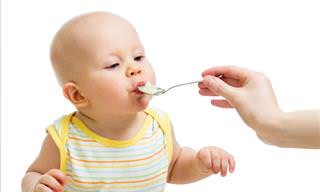
Never Give a Child Under the Age of 4 These Foods!
These foods pose the biggest choking risk to children under the age of 4.

Couples Passionate About Each Other Practice These Rituals
It's amazing to think what miraculous things can happen between a couple when new positive, behavior patterns are developed.

Children's Allowance: When and How Much Should You Give?
In the following article, you'll discover what experts in psychology, parenting, and financial management have to say on the subject, along with 5 tips to help you give your children pocket money

17 Parenting Shortcuts to Make Life with Kids Easier
These parenting hacks will make your days a lot less tiring.

Heartwarming! The Special Bond Between Mother & Son
These pictures illustrate just how special the bond between a mother and son truly is. Take a look:

A Guide for Buying Toys for Kids by Age
Here is our guide to buying children's gifts by age.
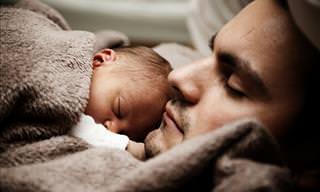
16 Pictures of Family Love that Will Move You to Tears
A collection of moments shared online that show family at its very finest and most loving

9 Tips for Preventing Your Children's Bedwetting
Follow these 9 tips that can help you free your child from that frustrating nightly bedwetting.

How to Keep Kids Safe Around the Pool
Know someone with young kids? Share this important guide about keeping kids safe near pools with them – it could help prevent a tragedy.

This Devoted Dad Has Some Words to Share....
Michael Mitchell is a devoted American father who collects tips from various fathers about raising kids, and these are some of his most interesting!

55 Things a Loving Man Does for the One He Loves
In order to show that men do express their love, here is a list of 55 things men do to show affection.
 2:27
2:27
100 Years of Toys: Do You Remember These Toys of the Past?
Did you play with any of these toys as a child? Learn about the curious evolution of toys during the past century in this incredibly-entertaining video.

10 Things Scientifically Proven to Make Children Smarter
10 scientifically proven ways to make your children smarter. All easily done at home.

12 Heartwarming Photos Depicting a Grandma's Love
There's no bond quite like that of grandmothers with their grandchildren. These photos by Sujata Setia capture this special energy.

How to Get Your Baby to Sleep Through the Night
Is your baby having trouble sleeping through the night? These tips will help.

10 Harmful Childrearing Mistakes That Parents Should Avoid
Parenting is the most challenging job in the world and it's natural to make mistakes, but some are more harmful to your children than others...

The Funny Side of Parenthood In 14 Hilarious Captures
These funny photos perfectly capture the complexity of being a parent. You can be tired, exasperated, and laughing out loud all at the same time.
To enable your Ad-Free Subscription, please fill the fields below
Your subscription was successful, now you can enjoy an ad-free experience!! Note: To make sure you get no ads, please make sure to log in to your account. If you are logged in already, then refresh the page. The subscription can be cancelled at any time.


